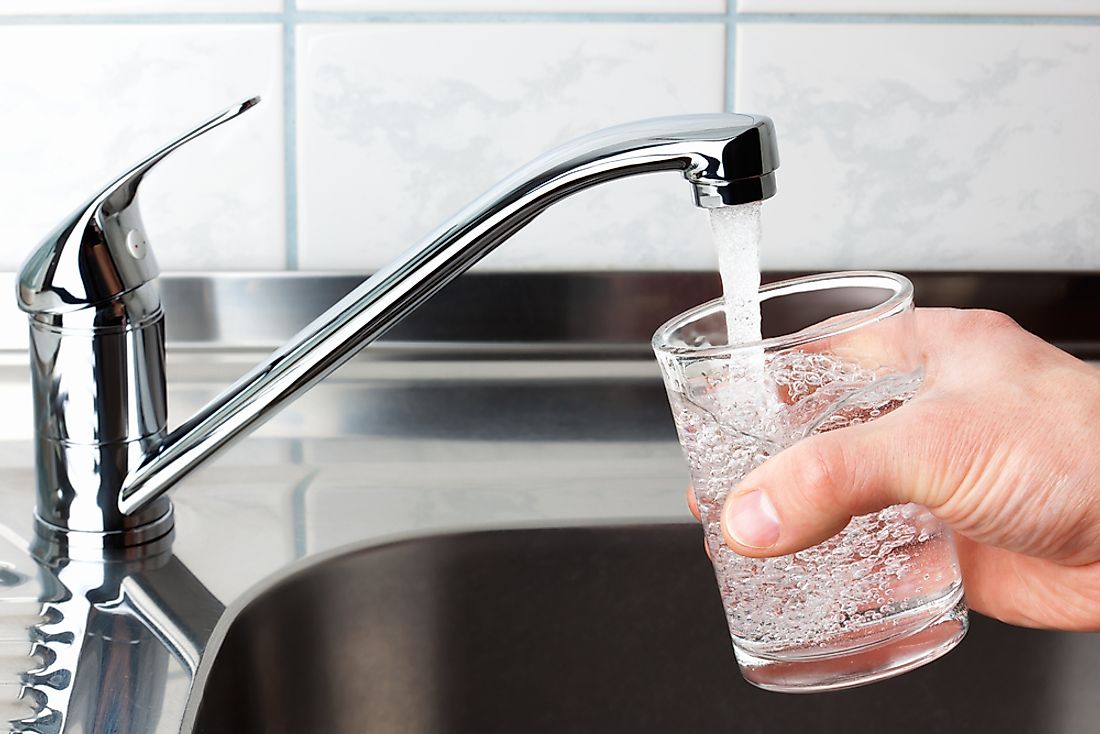What Percentage of the Earth's Water Is Drinkable?

It is a common fact that the world is covered in water. In fact, continents are like big islands in expansive oceans. About 75% of the earth is covered in water. There is no shortage of water on earth. The earth boasts of some of the largest water bodies including the oceans, lakes, and rivers that stretch across approximately two-thirds of its surface. However, despite the fact that three-quarters of the Earth are made up of water, less than 3% of the water is fresh, non-saline water. Furthermore, of the existing fresh water, not all of it is available for human consumption.
How Much Freshwater is There on Earth?
As stated above, about 2.5% of the Earth’s water is freshwater. Of the fresh water available on earth, only 31% is accessible for use. About 69% of the fresh water is in form of ice cap and glacier in places like the Antarctic and Greenland ice sheet, further reducing the quantity of the available drinking water. So, if only 31% of the fresh water is available for drinking, this means 31% of 2.5%=0.00775, which equates to less than 1%. Therefore, less than 1% of the earth’s water is drinkable. In some areas, the glacier often melts in summer to provide additional drinking water. However, the amount of water from glacier melt is not sufficient to increase the available fresh water to above 1%.
Where is Available Freshwater Stored?
Almost all the available freshwater (excluding glacier) is groundwater. The groundwater emerges and feeds the streams and saturated wetlands. It acts as a reservoir that can also be tapped for various uses including in agriculture and industries. Groundwater provides approximately 40% of the drinking water.
Another important source of drinking water is the surface freshwater. The surface water is held in lakes, rivers, dams, and streams. Although rivers and dams are critical for water supply, they contain only 1% of the freshwater. About 0.001% of the freshwater is contained in the form of atmospheric vapor, small amount considering its important function in weather. However, the atmospheric waters recycle several times in a year between the atmosphere and the earth’s surface, leading to rains and snows. The rains and snow are crucial in replenishing the surface water
How Many People Do Not Have Access to Clean Drinking Water?
Of the less than 1% of the available water for drinking, most of the third world countries do not have the needed resource to provide safe and clean drinkable water to its people. According to 2008 WHO report on Drinkable Water and Sanitation, about 885 million people, translating to an eighth of the world’s population, have no access to safe water. About 3.6 million people die annually from diseases resulting from unsafe drinking water.
What is the Future of Fresh Drinking Water?
Although surface water is an important source of drinkable water, surface water depends on several variable precipitation patterns, which makes it unreliable. Protecting and managing the underground and surface water is an essential task in ensuring availability of drinkable water. No one can create more water. But, by managing the water sources and distribution systems, people maximize the available water and make good use out of every drop.











